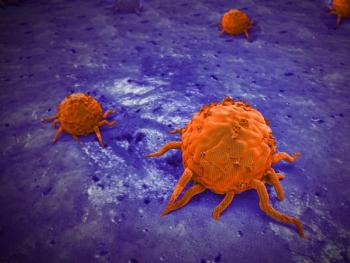
Cohort Study Identifies Factors Independently Associated With Breast Cancer–Related Lymphedema Risk Post-ALND

After identifying several factors independently associated with the risk of breast cancer–related lymphedema following axillary lymph node dissection, investigators recommend further studies to examine biologic mechanisms behind racial and ethnic disparities within this space.
Investigators identified several factors that were associated with risk of breast cancer–related lymphedema (BCRL) following axillary lymph node dissection (ALND) and radiotherapy, according to findings from a study published in JAMA Oncology.
The multivariable analysis indicated that factors independently associated with an increased risk of BCRL included Black race (odds ratio [OR] vs White race, 3.88; 95% CI, 2.14-7.08; P <.001) and Hispanic ethnicity (OR vs White race, 3.01; 95% CI, 1.10-7.62; P <.001), treatment with neoadjuvant chemotherapy (OR vs upfront surgery, 2.10; 95% CI, 1.16-3.95; P = .01), older age (OR, 1.04; 95% CI, 1.02-1.07 per 1-year increase; P = .001), and longer follow-up (OR, 1.57; 95% CI, 1.30-1.90 per 6-month increase; P <.001). Conversely, HER2-positive disease (OR, 0.50; 95% CI, 0.23-0.99; P = .04) was associated with decreased risk.
Investigators reported an overall 24-month BCRL rate of 23.8% (95% CI, 17.9-29.8%). When assessing 24-month BCRL rates by race, investigators reported a rate of 37.2% in Black patients, 27.7% in Hispanic patients, 22.5% in Asian patients, and 19.8% in White patients (P = .004). Those who received neoadjuvant chemotherapy had a higher 24-month BCRL rate (29.3%) compared with patients who underwent surgery up front (11.1%; P = .01).
Patients who were included in the study were 18 years or older and had undergone breast surgery plus either primary unilateral ALND or following sentinel lymph node biopsy. A total of 304 patients received ALND and were enrolled on the study from November 2016 to March 2020. Of these patients, 276 had received a minimum of 1 longitudinal measurement at baseline and were in the final analysis. Most of the population (88%) had at least 12 months of follow-up.
The median patient age was 48 years and the median patient body mass index was 26.4. Additionally, 11% of patients were Asian, 20% were Black, 6% were Hispanic, 60% were White, and 3% were reported with an unknown race/ethnicity.
A total of 56 patients developed BCLR at a median follow up of 22.6 months. The 24-month rate of BCRL was 29.3% in those treated with neoadjuvant chemotherapy compared with 11.1% in those who underwent surgery up front. In particular, rates were highest among patients treated with capecitabine at 44.3% compared with 23.9% among those who were not treated with the agent (P = .02).
“Future studies should address biologic mechanisms behind racial and ethnic disparities in BCRL development, further explore the mechanism for BCRL development in patients treated with [neoadjuvant chemotherapy], and evaluate alternatives to [neoadjuvant chemotherapy] to avoid ALND in tumor subtypes unlikely to achieve nodal [pathologic complete response],” the investigators concluded.
Reference
Montagna G, Zhang J, Sevilimedu V, et al. Risk factors and racial and ethnic disparities in patients with breast cancer–related lymphedema. JAMA Oncol. Published online June 9, 2022. doi:10.1001/jamaoncol.2022.1628
Newsletter
Stay up to date on recent advances in the multidisciplinary approach to cancer.




















































































